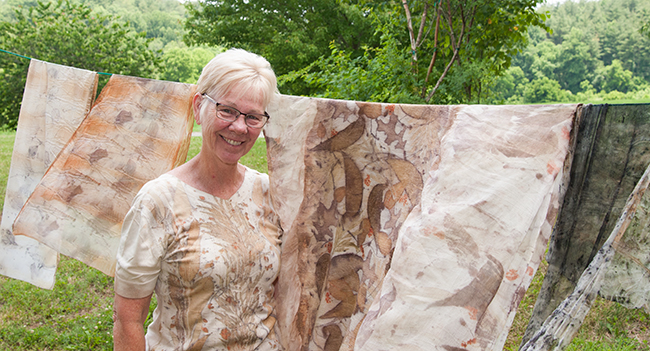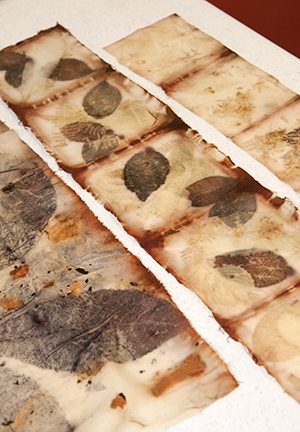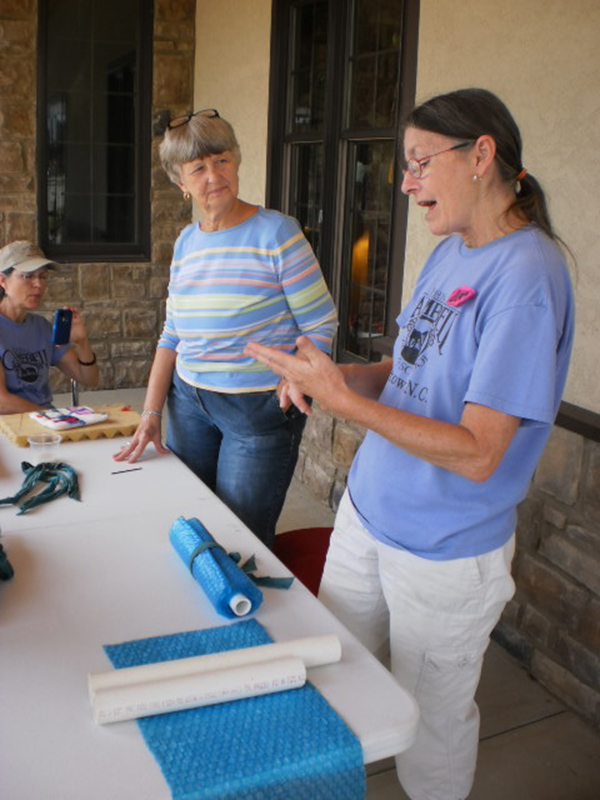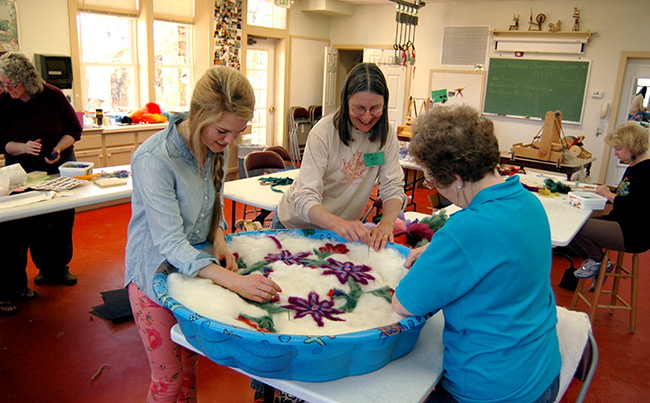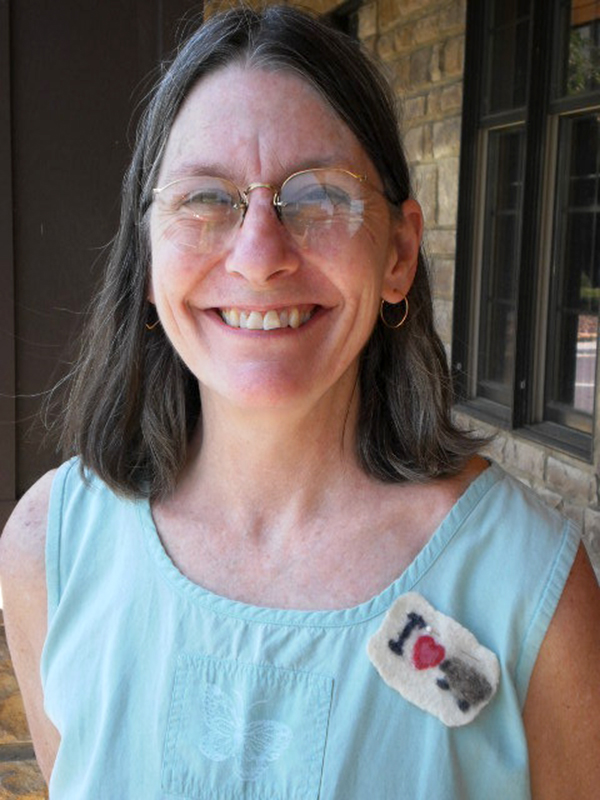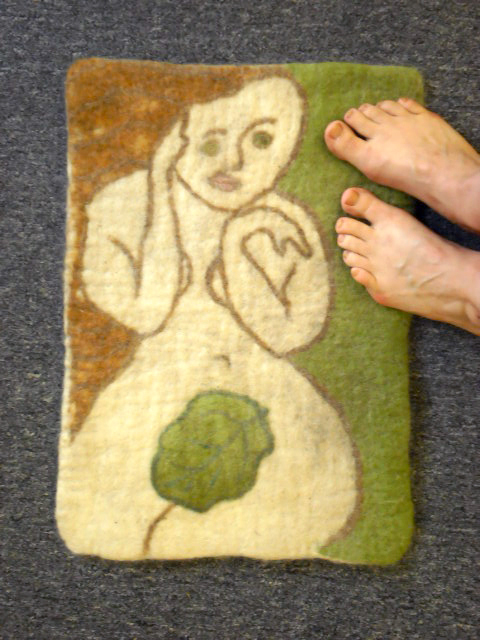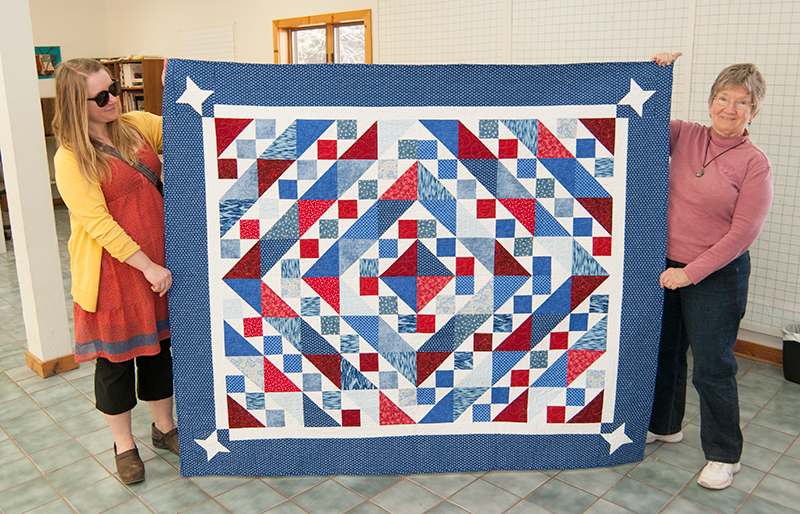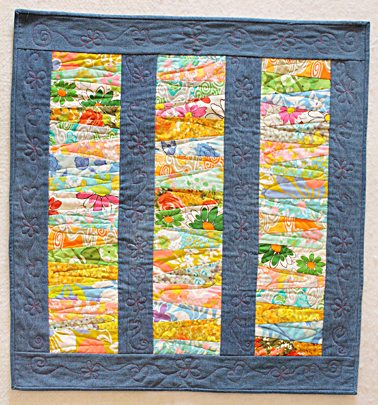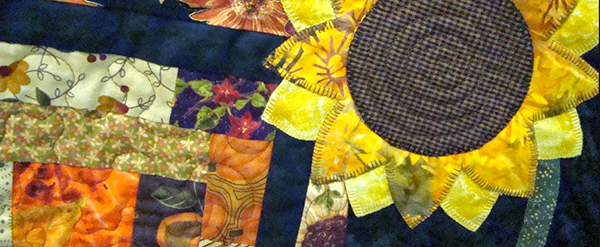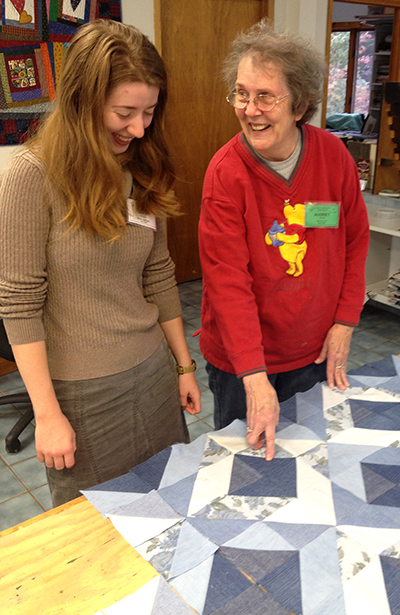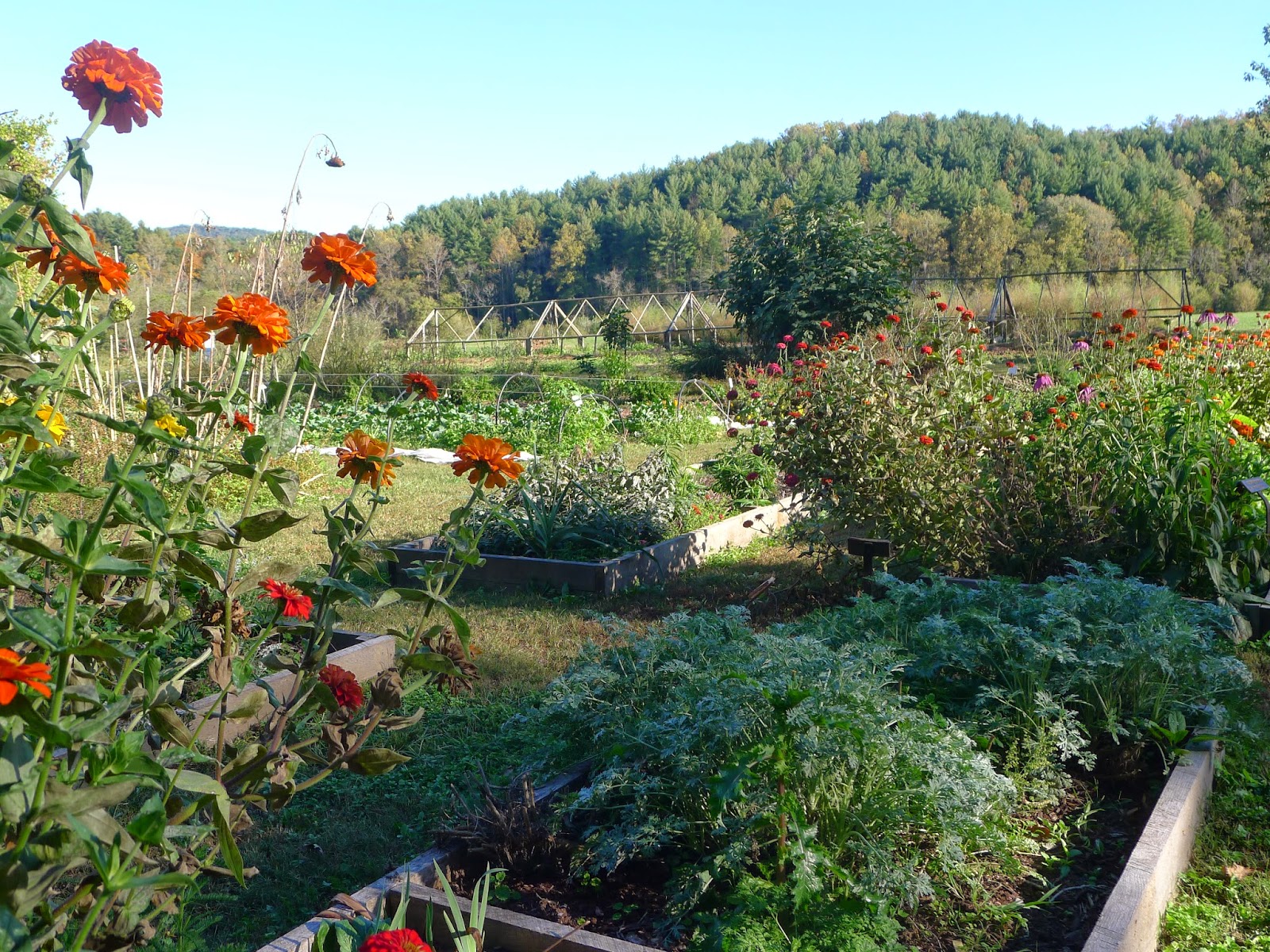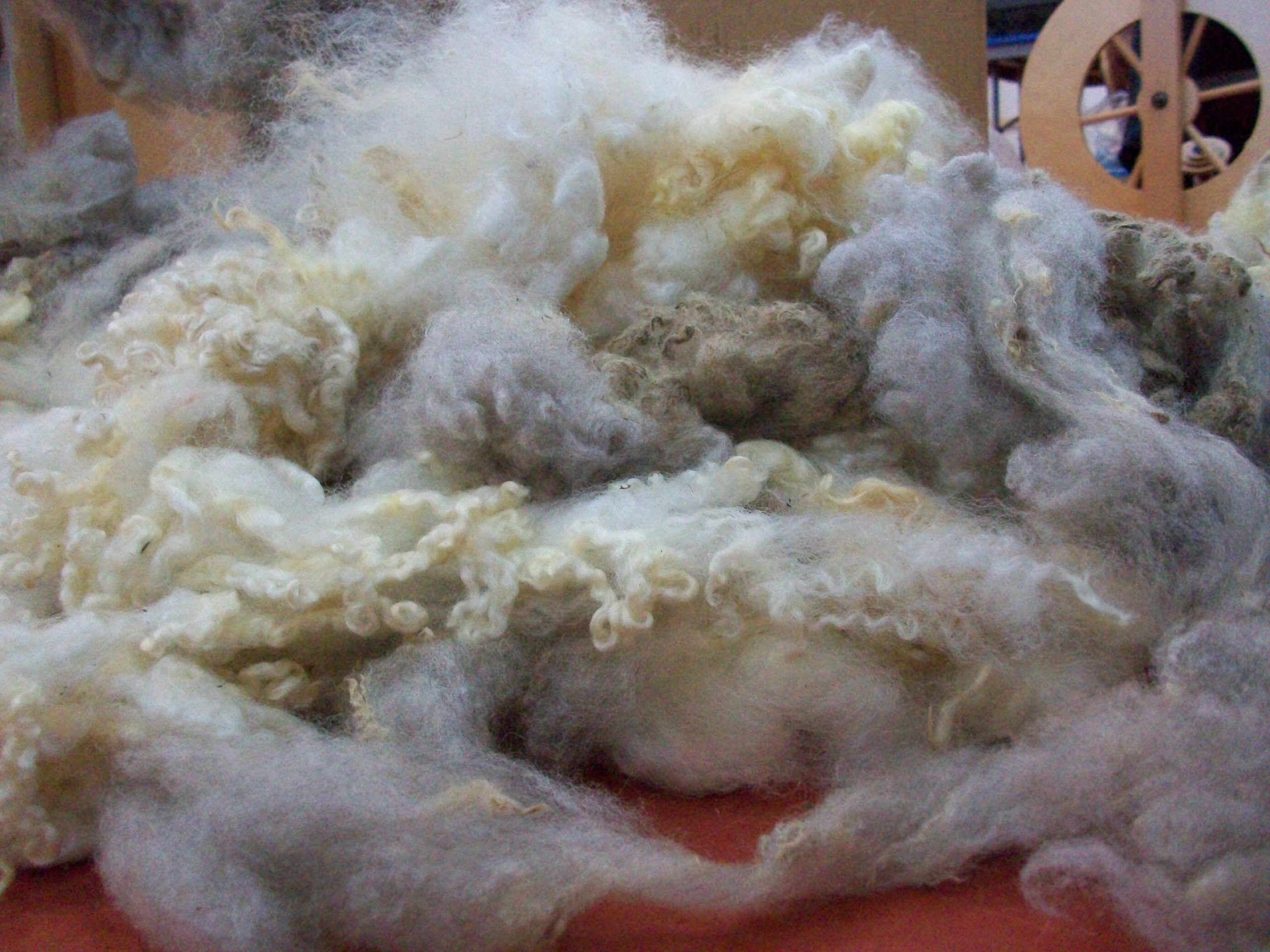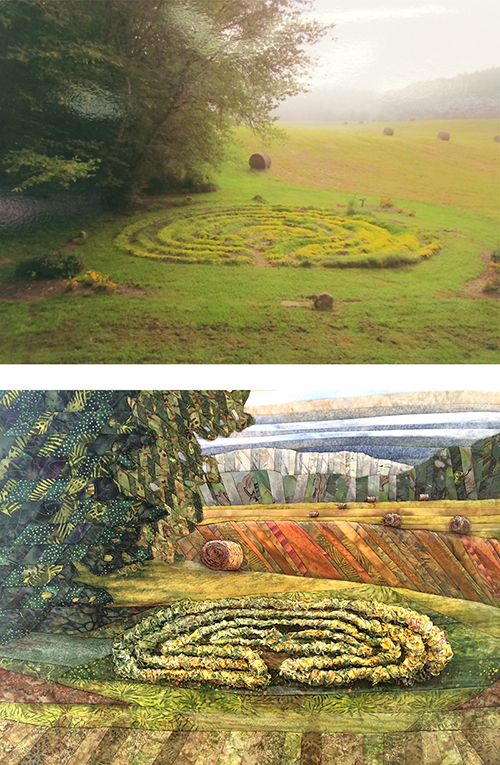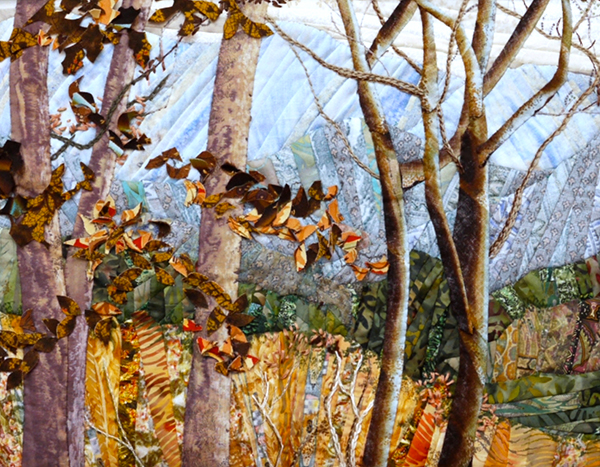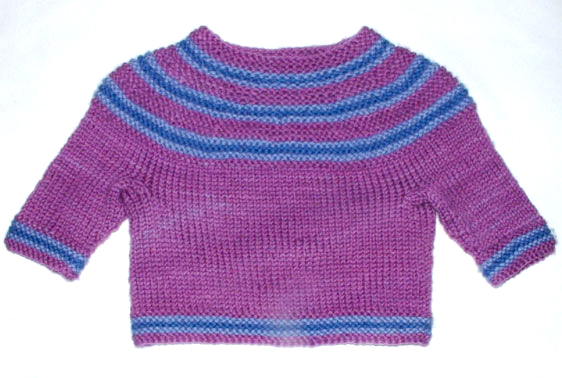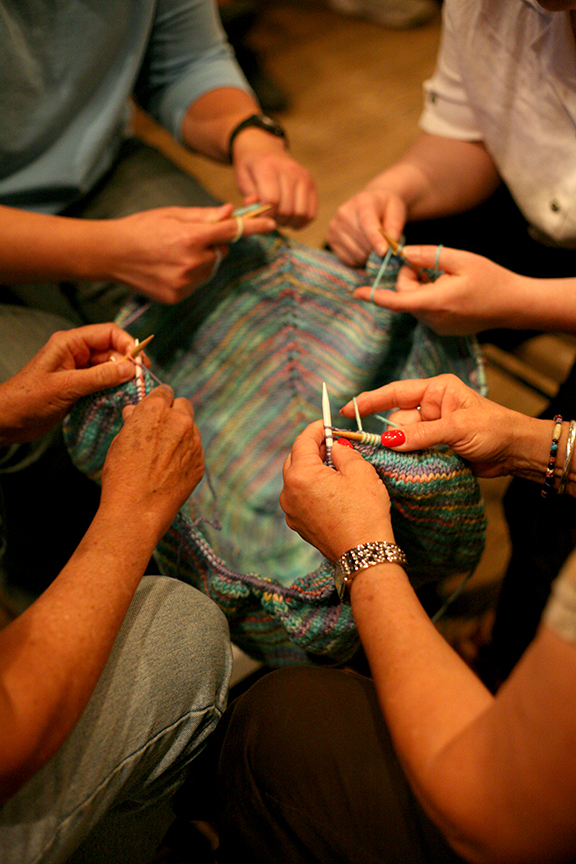I stopped by the Yarn Circle on a Monday afternoon to speak with Martha Owen, our beloved longtime Resident Artist in Spinning, Knitting, Dyeing and Felt Making. We talked about many things including fiber arts, raising sheep, travel, artistic process, Fair Isle, her rich history with the Folk School, and more. Enjoy our interview!
[caption id="attachment_10134" align="aligncenter" width="480"]
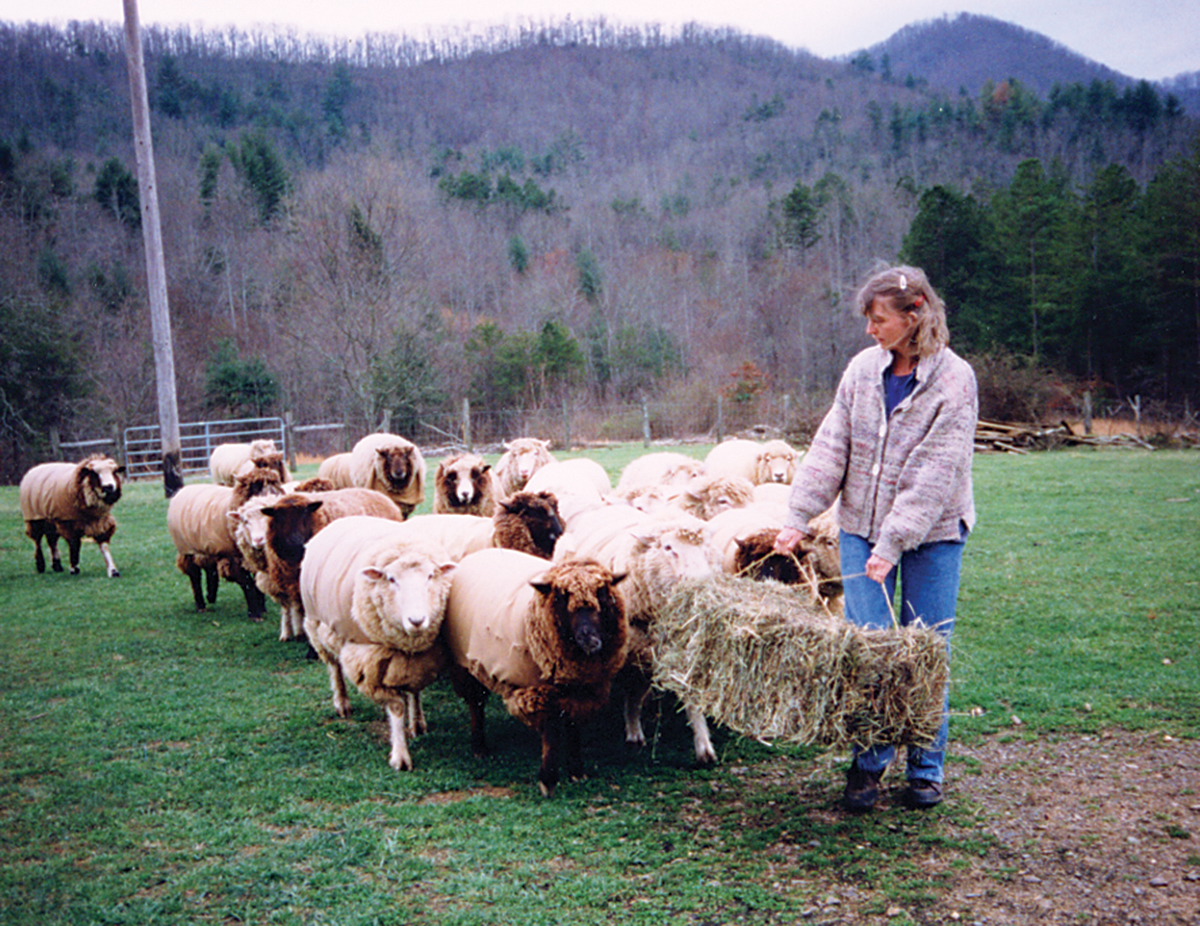
Don't ever lead your sheep with feed! A student photo op pic by Bonnie Shearer[/caption]
CP: How did you become involved with the Folk School?
MO: There was one year when I was a wee lass that I came to Little Folk School. I must have been 8, 9, or 10. I grew up in Pennsylvania, but my mother, Mary Porter Fain Owen came from Murphy. I would spend the summers here with my grandmother. At that time there was only one group of kids in Little Folk School. I learned to dance and I still sing the song I learned.
[caption id="attachment_10131" align="alignright" width="284"]
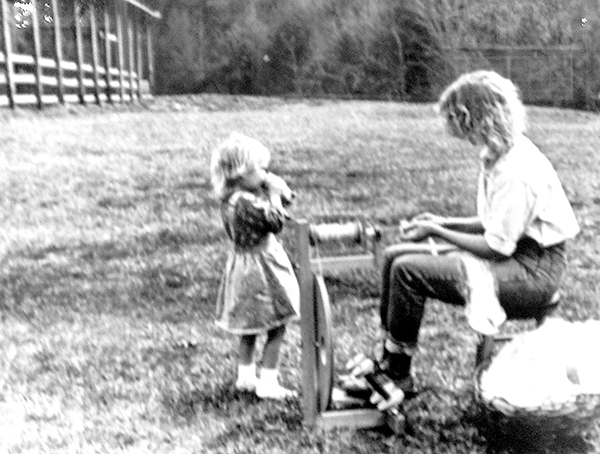
Photo shoot for Early American Life Magazine: Spinning near Festival Barn, August 1988 - That's Emolyn drinking a "grape coke" and trying to be good[/caption]
The next time, I was in college and I came for dancing again. I was doing volunteer work with a local church and we came to the dance one night. One summer my mother gave me a spinning wheel she had gotten from my great aunt and said: “Look! You always did like weird stuff.” She put the wheel down in front of me walked off and I thought “Well, I don’t know how to work with this thing.” My grandmother was reading the Cherokee Scout and saw an ad that the Campbell Folk School had a two-week class in Spinning and Dyeing. She said "Why don’t you go down and learn?" I said “Well, maybe I will.”
The full craft program that we have now had started in the '70s. The class was taught in Open House by Pam Strawn. We would card and spin and then do a dye pot when we had a pound of yarn between all of us. From that I made my first vest and I wore it for years to prove to my students that you should make something for any yarn you spin, you don’t have to wait until you spin “perfect” yarn.
My whole life turned left after taking that spinning class. That was 1978. I married my enabler, David Liden in 1979, and I had sheep by 1980.
CP: Tell me about your first sheep.
MO: I bought two ewes with lambs by their sides. One of the lambs was called "Maw Maw" and was the same age as my oldest daughter, Annie Fain. Maw Maw's portrait is hanging in our house. She was a pretty important sheep and I learned a lot of things from her. She lived to be 17.
CP: Do you have tips for beginning sheep owners?
[caption id="attachment_10141" align="alignleft" width="237"]
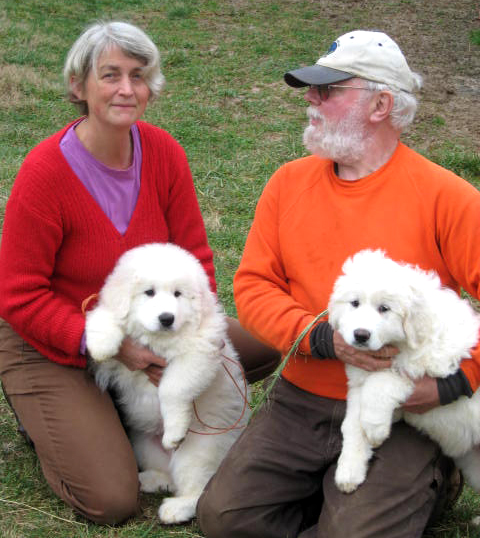
Ro-bear and Julliet, our current Great Pyrenees dogs - they weigh at least 125 pounds each now and live with the sheep (Oh, and Martha and David!) - Photo by Charlotte Crittenden[/caption]
MO: Now I have 35 sheep, but you've got to start small. Sheep reproduce quickly. While you are learning about things like housing, worming, and hoof trimming, etc, the fewer sheep the better. Security is also top priority. Sheep don’t have a way to protect themselves besides snorting, stomping, and running away which is very attractive to dogs. The biggest problems you have are neighbors' dogs and strays. Try security animals like llamas, donkeys, or Great Pyrenees. I have two Great Pyrenees right now. I haven't had any predator problems since they have been here. We are on our fourth generation. A border collie's job is the tell the sheep what to do, but the Pyrenees protect the sheep. They live with the sheep.
CP: As a current resident artist, one of your duties is to schedule teachers for the knitting, dyeing, felt making and spinning classes at the Folk School. How do you find them?
MO: Every possible way you can think of. We need someone who is passionate about what they do, someone who has done their craft a lot, but is a good teacher. I am always looking around and listening.
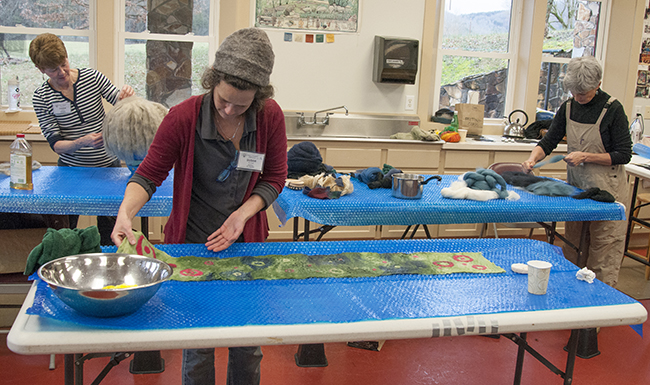 Students in Kay Patterson's "Needle, Nuno, and Wet–Feltmaker's Sampler" class learned all about different kinds of felting making. Many of us in the class found a love for making felting hats. By the end of the week, we were our own fashion show around campus with whimsical colorful creations on our heads. Enjoy these photos from our week!
Students in Kay Patterson's "Needle, Nuno, and Wet–Feltmaker's Sampler" class learned all about different kinds of felting making. Many of us in the class found a love for making felting hats. By the end of the week, we were our own fashion show around campus with whimsical colorful creations on our heads. Enjoy these photos from our week!





